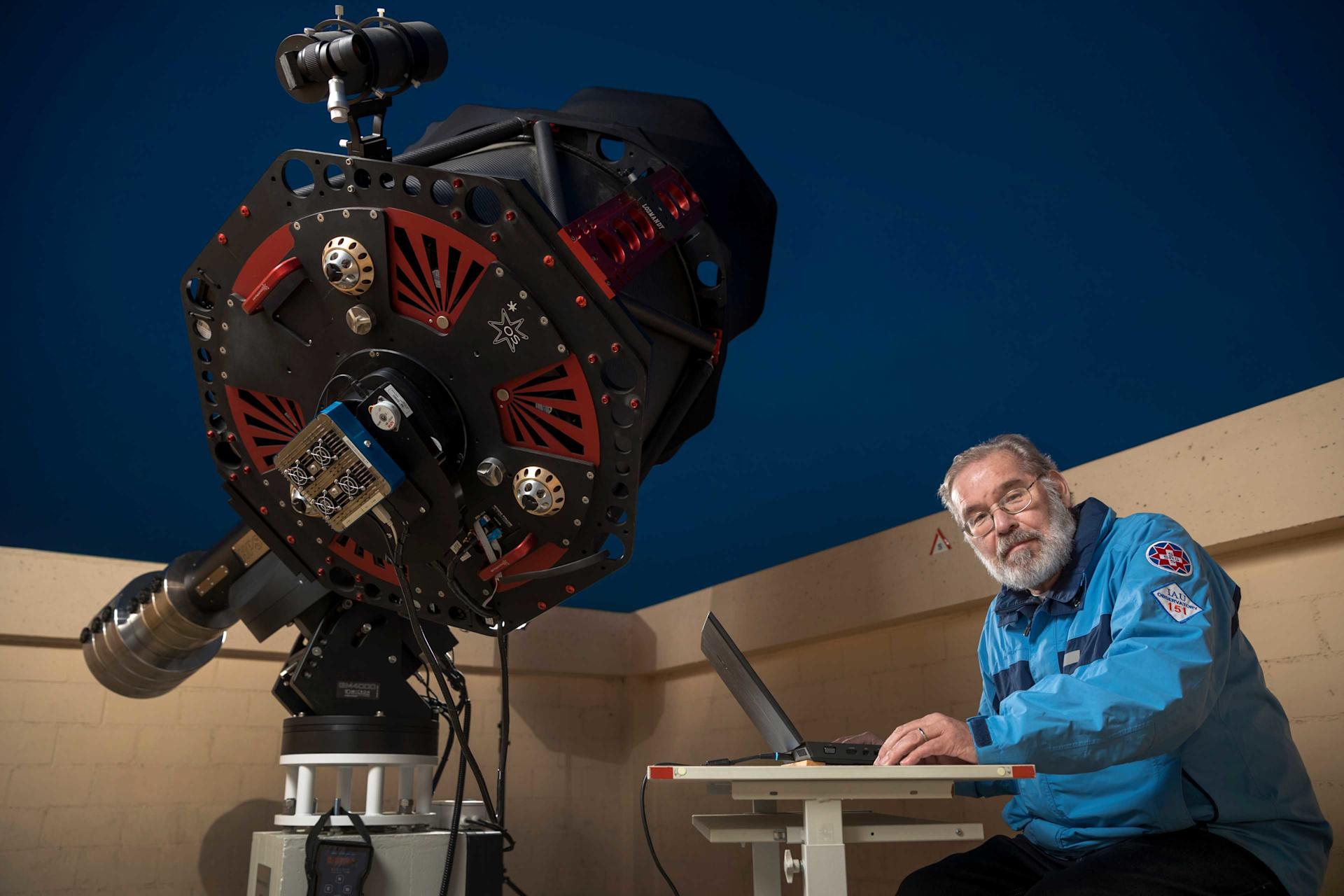
Supermarket
The new design of Migros own brands
Many Migros own brands have received new packaging. Head of Marketing Rémy Müller explains why.
navigation

Migros Observatory
Astronomer Markus Griesser has discovered ten asteroids. In this interview, he explains why he isn’t worried about rocks falling from outer space, but is extremely annoyed by space debris.
Markus Griesser, you’ve discovered ten rocks in space and named each of them - but none of them after yourself. How come you’re so modest?
I’ve never really felt the urge to immortalise myself in space. Anyway, it doesn’t actually work like that. The centre in the USA that records all asteroids applies strict rules: astronomers are not allowed to name these lumps of rock after themselves, nor after politicians or military leaders. I’ve given some of my asteroids place names in Canton Zurich - such as Winterthur. But a German astronomer did actually baptise a rock in space with the name Griesser. He did that out of respect for my work, which I was obviously delighted by.
Over recent months, the asteroid ‘2024 YR4’ has attracted lots of media coverage – it is set to enter Earth's orbit in about seven years’ time...
The media was fascinated by this rock because the probability of an impact briefly reached around 3%. It then fell to almost zero. Corrections like this are common. The longer you observe an asteroid, the more accurately you can predict its orbit.
What would have happened if this rock had hit an inhabited area or even a city?
It would have been catastrophic! ‘2024 YR4’ may only have a maximum diameter of 70 metres, but it moves at breakneck speed - travelling at around 50,000 kilometres an hour. This creates tremendous kinetic energy, as it is called in physics jargon. That means the asteroid would have landed with huge force and caused extreme destruction. It would have been as catastrophic as the explosion of 500 Hiroshima atomic bombs.
It doesn’t bear thinking about really.
Absolutely, and yet I think it’s wrong to panic at the prospect of such a scenario. We can be relatively relaxed as the likelihood of us ever experiencing such a catastrophe is very small indeed. The fact that only a fraction of the Earth's surface is covered by urban areas helps enormously in this respect. Most of its surface, in fact over 70%, is covered by the world's oceans. But we still need to keep a close eye on near-Earth asteroids and prepare ourselves just in case we are hit by a larger chunk of rock.
When space debris burns up, it looks like a shooting star.
What could humanity actually do anyway to stop a dangerous asteroid? In Hollywood movies, they are regularly bombarded with atomic bombs...
That’s not a good idea! If an asteroid were blown up on its way to Earth, the worst-case scenario would be huge piles of debris falling which could have a devastating impact over a much larger area than a single rock. NASA is currently in the process of developing a much better defence method: the idea is to launch a space probe to collide with the asteroid in good time to push it out of its orbit slightly. If that were achieved at a great distance from Earth, even a tiny correction would be enough to ensure the lump of rock ultimately hurtled past our planet.
Many new satellites have been launched into orbit over recent years. Has that changed the night sky?
Yes, absolutely - the changes are actually visible to the naked eye: Elon Musk’s company SpaceX regularly launches hordes of Starlink satellites into orbit. Provided they remain in low orbit, they can be seen from Earth like a string of pearls made up of tiny dots of light. Then on top of everything else there’s the ever-increasing mass of space debris – when this burns up in the atmosphere, it looks like a shooting star.
Is space debris dangerous?
It could hit the International Space Station (ISS), injuring astronauts. But above all else, this mass of debris creates a huge problem for us astronomers. A vast pile of debris is orbiting Earth, increasingly obstructing our observations. I find that really annoying. The problem is that there are no rules on the commercial use of space. Absolutely anyone with the technical capabilities can launch objects into near-Earth space. That includes dubious companies only interested in short-term profit.
Discover exciting stories about all aspects of Migros, our commitment and the people behind it. We also provide practical advice for everyday life.